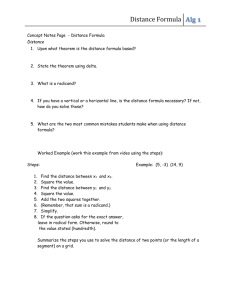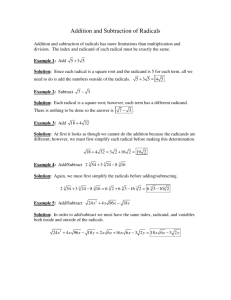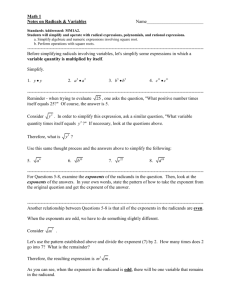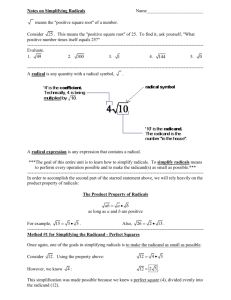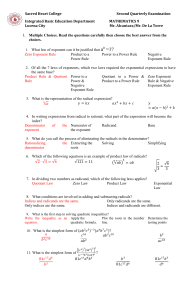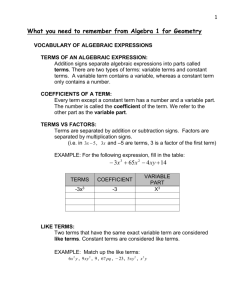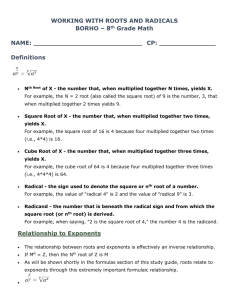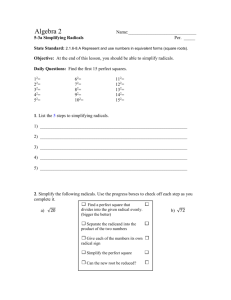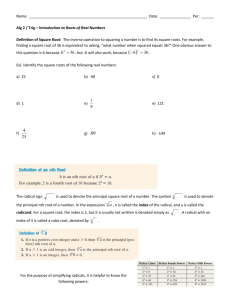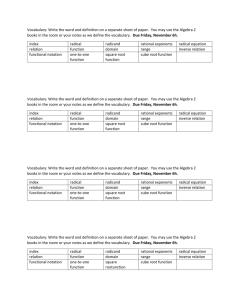Simplifying Radicals Notes Outline (doc)
advertisement
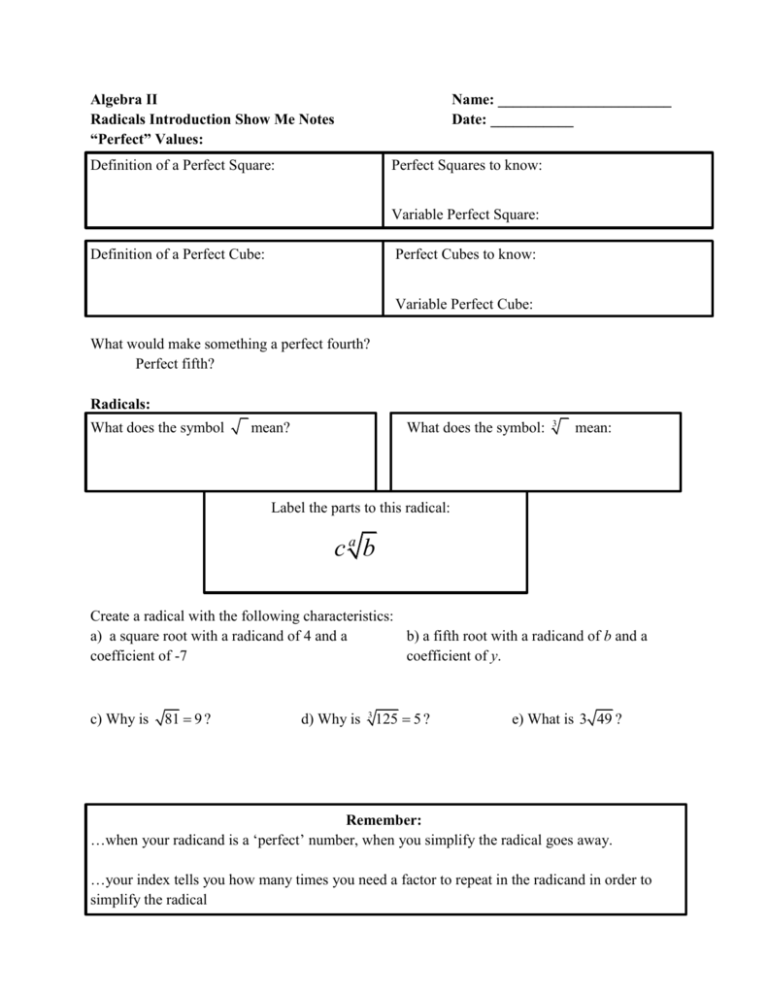
Algebra II Radicals Introduction Show Me Notes “Perfect” Values: Name: _______________________ Date: ___________ Definition of a Perfect Square: Perfect Squares to know: Variable Perfect Square: Definition of a Perfect Cube: Perfect Cubes to know: Variable Perfect Cube: What would make something a perfect fourth? Perfect fifth? Radicals: What does the symbol mean? What does the symbol: 3 mean: Label the parts to this radical: ca b Create a radical with the following characteristics: a) a square root with a radicand of 4 and a b) a fifth root with a radicand of b and a coefficient of -7 coefficient of y. c) Why is 81 9 ? d) Why is 3 125 5 ? e) What is 3 49 ? Remember: …when your radicand is a ‘perfect’ number, when you simplify the radical goes away. …your index tells you how many times you need a factor to repeat in the radicand in order to simplify the radical Non-perfect Radicands 20 This expression says ‘what number times itself gives us 20’…. Umm, there isn’t one. So how can we simplify it? We take any factors of 20 that multiply by itself. Let’s see what factors give us 20 – break it down! Simplifying Non-Perfect Radicands 1) Prime factor the radicand 2) Using the index, determine how many repetitions of a factor we need. 3) Pull out the repeating factors as part of the coefficient; leave the other factors as part of the radicand. Variables: the same rules apply, you need to take out the repeating factors based on the index. Any extra repeating factors stay as the radicand. Short cut: divide the exponent by the index – quotient is the exponent of the coefficient, the remainder is the exponent of the radicand. 20 3 300x5 5 4 96a6b3 2 3 125c5 d 9 f 7 Your Turn – Try these three…. 72 3 108x 4 63
